
The annals of American industry are replete with stories of ingenuity, bold ambition, and transformative progress, perhaps none more so than the automotive sector during its formative years. Between 1900 and 1930, the automobile evolved from a cumbersome novelty, where drivers collapsed from exhaustion after 20 miles of a 50-mile race, to an indispensable cornerstone of the nation. This rapid evolution, however, wasn’t without its complexities, driven by individuals whose genius often bordered on insanity and broader industry trends that exhibited profound contradictions.
This era, often viewed through a lens of unbridled optimism, also reveals a fascinating tapestry of challenges, misjudgments, and unforeseen consequences. As the industry rapidly reshaped American society, introducing unprecedented individual freedom alongside previously unknown levels of personal debt and pollution, it became clear that even the most celebrated advancements and visionary leaders harbored deep-seated flaws. These cracks in the pedestal, whether personal or systemic, offer crucial insights into the true cost and evolving nature of progress.
From resistance to essential safety features to the societal costs of widespread adoption, we delve into ten pivotal moments and figures that reveal the inherent imperfections within the grand narrative of automotive innovation. This examination underscores that while visionaries create lasting value and monumental change, their journeys, and the industries they forge, are rarely, if ever, a straight line of unblemished success. Understanding these historical and ongoing flaws is essential for navigating the complex future of mobility.
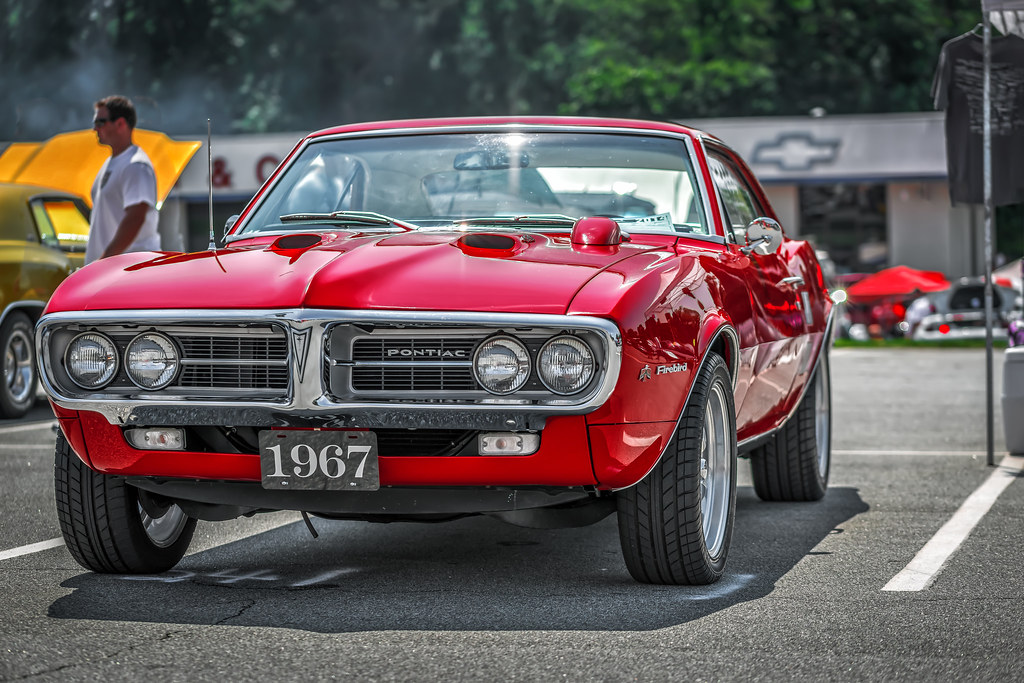
1. **Early Manufacturers’ Flawed Stance on Front Brakes**The early 20th century was a period of intense experimentation and often contradictory engineering philosophies within the burgeoning automotive industry. While innovations were rapidly advancing vehicle capabilities, fundamental aspects of safety were sometimes met with surprising resistance from prominent figures and manufacturers. This era saw a curious and potentially dangerous oversight regarding a now-standard safety feature: front-wheel brakes.
In a striking example of flawed judgment, Henry Ford and other manufacturers published full-page advertisements claiming that brakes on the front wheels were dangerous. This position, disseminated widely, represented a significant impediment to vehicle safety, at a time when speeds were increasing and road conditions remained challenging. Such a stance illustrates how established industry leaders, despite their visionary capacities in production and accessibility, could hold steadfast to beliefs that, in retrospect, were demonstrably incorrect and hazardous.
The context further highlights this resistance by noting that some manufacturers “steadfastly held to the belief that brakes on the front wheels represented a danger,” while others “clung to the belief that mechanical brakes were safer than hydraulic systems.” This fragmented approach to safety, prioritizing existing mechanical systems or misinterpreting the dynamics of braking, prolonged the adoption of superior technologies. It demonstrates a collective flaw in judgment, where cautious conservatism or even misinformed opinion superseded clear engineering advantages that would eventually become industry standards.
This reluctance to embrace what would become a critical safety component reveals a significant “crack” in the early industry’s pedestal. It underscores that even in an age of astounding technological development, fundamental safety considerations could be overlooked or actively resisted by influential voices. The ultimate widespread adoption of front brakes, long after these advertisements, stands as a testament to overcoming such deeply ingrained, yet flawed, perspectives.
Read more about: Unearthing the Automotive Ghosts: 14 Forgotten Two-Seater Sports Cars That Demand Your Attention

2. **Charles Kettering’s “Debacle” with the Air-Cooled Chevrolet**Charles Kettering stands as one of the most prolific and impactful inventors in automotive history, a true visionary whose innovations reshaped multiple industries. His contributions included the development of the electric starter for Cadillac, Freon for refrigeration, Duco automotive paints, and leaded gasoline, which enabled the manufacture of high-compression engines. His genius undoubtedly propelled technological advancement, yet even a mind of his caliber experienced significant, publicly acknowledged failures.
One such stark instance was the “trouble-prone air-cooled model” that Chevrolet introduced in 1921, a debacle for which Kettering was identified as the “genius behind.” This ill-fated vehicle almost served as the company’s swan song, highlighting that even the most brilliant minds are susceptible to miscalculation and flawed execution. The concept of an air-cooled engine, while seemingly innovative, proved to be a critical flaw in its practical application for Chevrolet at that time, leading to widespread problems for consumers.
This specific product failure demonstrates that while visionary leaders push boundaries, not every bold experiment yields success. The “genius bordered on insanity” sentiment, mentioned in the broader context of the auto industry’s early figures, finds a concrete illustration in Kettering’s involvement with this problematic model. It underscores that the line between groundbreaking innovation and significant commercial setback can be remarkably thin, even for a lauded figure with an impressive track record of successes.
For Chevrolet, the fallout from this trouble-prone model was severe, threatening the company’s very existence. It was a stark reminder that market acceptance and reliability are paramount, regardless of the underlying engineering ambition. Kettering’s experience with the air-cooled Chevrolet serves as a potent historical lesson: even a visionary’s most brilliant ideas can manifest as deep flaws if not meticulously executed and thoroughly tested for real-world viability, creating a notable crack in his otherwise formidable legacy.
Car Model Information: 2019 Chevrolet Equinox 2LT
Name: General Motors LS small-block engine
Caption: Chevrolet Camaro
Manufacturer: General Motors
Designer: Tom Stephens, Ed Koerner
Production: 1997–present
Configuration: V8 engine
Predecessor: Chevrolet small-block engine (first and second generation)
Successor: Chevrolet Gemini small-block engine
Bore: cvt
Stroke: cvt
Block: Aluminum,Cast iron
Head: Aluminum,Cast iron
Displacement: cvt
Valvetrain: Overhead valve engine
Power: cvt
Torque: cvt
Fuelsystem: Fuel injection,carburetor
Oilsystem: Wet sump,Dry sump
Coolingsystem: Water cooling (engines)
Fueltype: Gasoline,E85
Compression: 9.08:1–13.1:1
Weight: cvt
Categories: All Wikipedia articles needing clarification, All Wikipedia articles written in American English, All articles needing additional references, All articles with self-published sources, Articles needing additional references from October 2015
Summary: The General Motors LS-based small-block engines are a family of V8 and offshoot V6 engines designed and manufactured by the American automotive company General Motors. Introduced in 1997, the family is a continuation of the earlier first- and second-generation Chevrolet small-block engine, of which over 100 million have been produced altogether and is also considered one of the most popular V8 engines ever. The LS family spans the third, fourth, and fifth generations of the small-block engines, with a sixth generation expected to enter production soon. Various small-block V8s were and still are available as crate engines.
The “LS” nomenclature originally came from the Regular Production Option (RPO) code LS1, assigned to the first engine in the Gen III engine series. The LS nickname has since been used to refer generally to all Gen III and IV engines, but that practice can be misleading, since not all engine RPO codes in those generations begin with LS. Likewise, although Gen V engines are generally referred to as “LT” small-blocks after the RPO LT1 first version, GM also used other two-letter RPO codes in the Gen V series.
The LS1 was first fitted in the Chevrolet Corvette (C5), and LS or LT engines have powered every generation of the Corvette since (with the exception of the Z06 and ZR1 variants of the eighth generation Corvette, which are powered by the unrelated Chevrolet Gemini small-block engine). Various other General Motors automobiles have been powered by LS- and LT-based engines, including sports cars such as the Chevrolet Camaro/Pontiac Firebird and Holden Commodore, trucks such as the Chevrolet Silverado, and SUVs such as the Cadillac Escalade.
A clean-sheet design, the only shared components between the Gen III engines and the first two generations of the Chevrolet small-block engine are the connecting rod bearings and valve lifters. However, the Gen III and Gen IV engines were designed with modularity in mind, and several engines of the two generations share a large number of interchangeable parts. Gen V engines do not share as much with the previous two, although the engine block is carried over, along with the connecting rods. The serviceability and parts availability for various Gen III and Gen IV engines have made them a popular choice for engine swaps in the car enthusiast and hot rodding community; this is known colloquially as an LS swap. These engines also enjoy a high degree of aftermarket support due to their popularity and affordability.
Get more information about: General Motors LS-based small-block engine
Buying a high-performing used car >>>
Brand: Chevrolet Model: Chevrolet
Price: $16,990 Mileage: 68,829 mi.
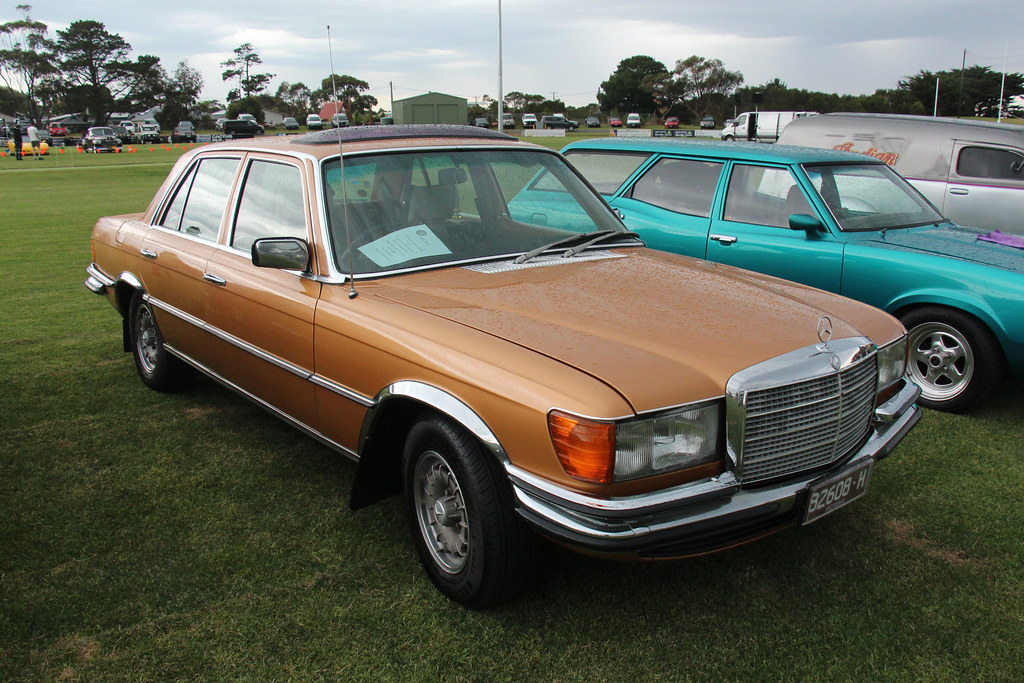
3. **Lee Iacocca’s Acknowledged Personal and Business Failures**Lee Iacocca is an indelible name in American automotive history, a leader celebrated for his transformative impact on two iconic companies. He is widely remembered for his pivotal role in launching the immensely popular Ford Mustang, a car that captured the spirit of a generation. Beyond Ford, Iacocca achieved legendary status for rescuing Chrysler from the brink of bankruptcy, a feat of corporate turnaround that cemented his reputation as a formidable business leader and a true visionary.
Perhaps less flashy than the Mustang, Iacocca also championed the minivan, a concept that other leaders had initially rejected. This humble vehicle, as Automotive News reported, “became one of the most profitable consumer products ever created, inspired a raft of copycats, and helped Chrysler reap billions of dollars in sales for decades.” His ability to see a “vast hole in the market, the gaping need so elemental that consumers might not even be able to put it into words,” as Frank Ahrens wrote in Forbes, indeed placed him in the company of figures like Steve Jobs.
Despite these monumental successes and his enduring status as a visionary leader, Iacocca’s legacy is not entirely unblemished. The context explicitly notes, “While some have criticized Iacocca’s personal and business failures since his death, most have instead focused on his influential leadership style.” This acknowledgment of criticisms regarding his “personal and business failures” provides a crucial nuance to his celebrated career, revealing the complexity inherent in even the most revered leaders.
These unspecified failures, though not detailed in the provided text, remind us that the pedestal upon which visionaries are placed is often not entirely solid. Even individuals credited with saving companies and revolutionizing product categories can have periods of struggle, misjudgment, or decision-making that later draw criticism. This aspect of Iacocca’s career serves as a powerful illustration that while visionary leadership is about “leading and engaging others with your future-oriented, purposeful picture,” it doesn’t equate to infallibility, leaving a subtle yet significant crack in his otherwise heroic narrative.
Car Model Information: 2008 Ford Mustang GT Premium
Name: Ford Mustang
Caption: 2018 Ford Mustang GT 5.0
Aka: Ford T5 (Germany)
Manufacturer: Ford Motor Company
Production: March 1964 – present
ModelYears: 1965–present
Class: Unbulleted list
BodyStyle: Unbulleted list
Layout: Front-engine, rear-wheel-drive layout
Categories: 1970s cars, 1980s cars, 1990s cars, 2+2 coupés, 2000s cars
Summary: The Ford Mustang is an American automobile manufactured and marketed by Ford since 1964, as Ford’s longest nameplate in continuous production. Currently in its seventh generation, it is the fifth-best selling Ford car nameplate. The namesake of the “pony car” automobile segment, the Mustang was developed as a highly styled line of sporty coupes and convertibles derived from existing model lines, initially distinguished by its pronounced “long hood, short deck” proportions.
Originally predicted to sell 100,000 vehicles yearly, the 1965 Mustang became the most successful vehicle launch since the 1927 Model A. Introduced on April 17, 1964 (16 days after the Plymouth Barracuda), over 400,000 units were sold in its first year; the one-millionth Mustang was sold within two years of its launch. In August 2018, Ford produced the 10-millionth Mustang; matching the first 1965 Mustang, the vehicle was a 2019 Wimbledon White convertible with a V8 engine.
The success of the Mustang launch led to multiple competitors from other American manufacturers, including the Chevrolet Camaro and Pontiac Firebird (1967), AMC Javelin (1968), and Dodge Challenger (1970). It also competed with the Plymouth Barracuda, which was launched around the same time. The Mustang also had an effect on designs of coupes worldwide, leading to the marketing of the Toyota Celica and Ford Capri in the United States (the latter, by Lincoln-Mercury). The Mercury Cougar was launched in 1967 as a unique-bodied higher-trim alternative to the Mustang; during the 1970s, it included more features and was marketed as a personal luxury car.
From 1965 until 2004, the Mustang shared chassis commonality with other Ford model lines, staying rear-wheel-drive throughout its production. From 1965 to 1973, the Mustang was derived from the 1960 Ford Falcon compact. From 1974 until 1978, the Mustang (denoted Mustang II) was a longer-wheelbase version of the Ford Pinto. From 1979 until 2004, the Mustang shared its Fox platform chassis with 14 other Ford vehicles (becoming the final one to use the Fox architecture). Since 2005, Ford has produced two generations of the Mustang, each using a distinct platform unique to the model line.
Through its production, multiple nameplates have been associated with the Ford Mustang series, including GT, Mach 1, Boss 302/429, Cobra (separate from Shelby Cobra), and Bullitt, along with “5.0” fender badging (denoting 4.9 L OHV or 5.0 L DOHC V8 engines).
Get more information about: Ford Mustang
Buying a high-performing used car >>>
Brand: Ford Model: Mustang
Price: $16,785 Mileage: 81,832 mi.
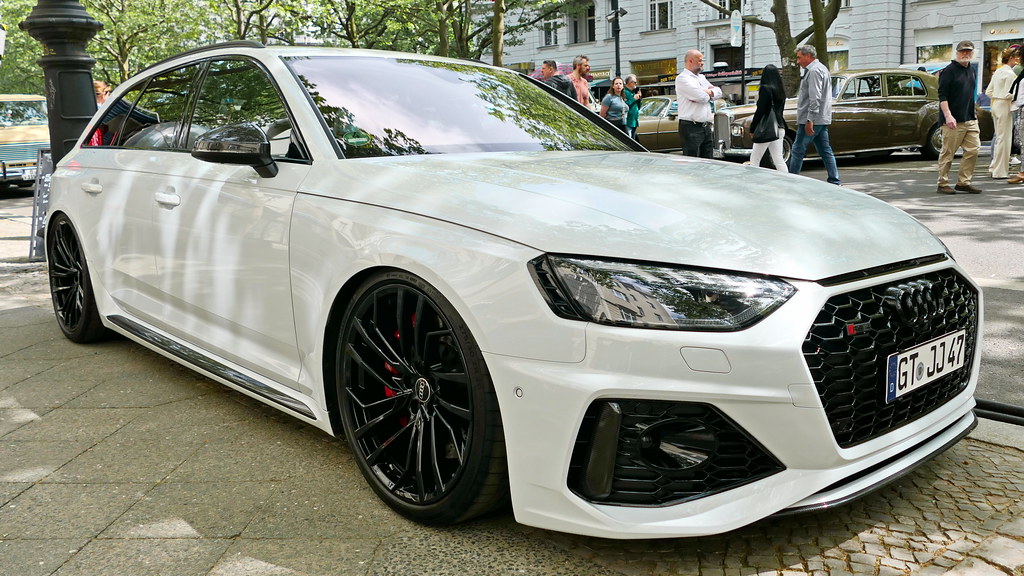
4. **The Industry’s Early Myopia and Optimistic Pessimism**The dawn of the American automobile industry was characterized by an intriguing blend of grand ambition and fundamental shortsightedness. It was an era where “business leaders who created vast empires…viewed the future of the automobile with a sense of optimistic pessimism.” This paradoxical outlook suggests a recognition of the automobile’s potential for change, yet a simultaneous hesitation or inability to fully grasp its far-reaching implications, both positive and negative.
The context further elaborates on this collective flaw, noting that there were “visionaries whose attempts to transform the world with imaginative innovation were hampered by extreme myopia.” This suggests a failure of foresight, where brilliant minds could envision revolutionary products but struggled to comprehend the broader societal shifts and infrastructural demands these innovations would inevitably trigger. The focus remained primarily on the mechanical artistry and immediate commercial opportunity, rather than a holistic understanding of the future.
A vivid example of this myopia is astute businessmen such as Montgomery Ward, who “saw the automobile as a fad that children should see before it passed.” This illustrates a stark underestimation of the automobile’s staying power and its eventual ubiquity. Such a perspective, while perhaps understandable in an era of rapid technological change, demonstrates a clear lack of vision regarding the automobile’s true transformative capacity, missing the foundational shift it would instigate in American life.
This “optimistic pessimism” and “extreme myopia” represent a significant systemic flaw in the early industry’s collective vision. It highlights that while individual innovations were astounding, the overarching understanding of the automobile’s long-term impact on society, environment, and infrastructure was incomplete. This limited perspective, shared by many influential figures, is a foundational crack in the pedestal of early automotive leadership, showing how even those building empires could misjudge the very landscape they were creating.
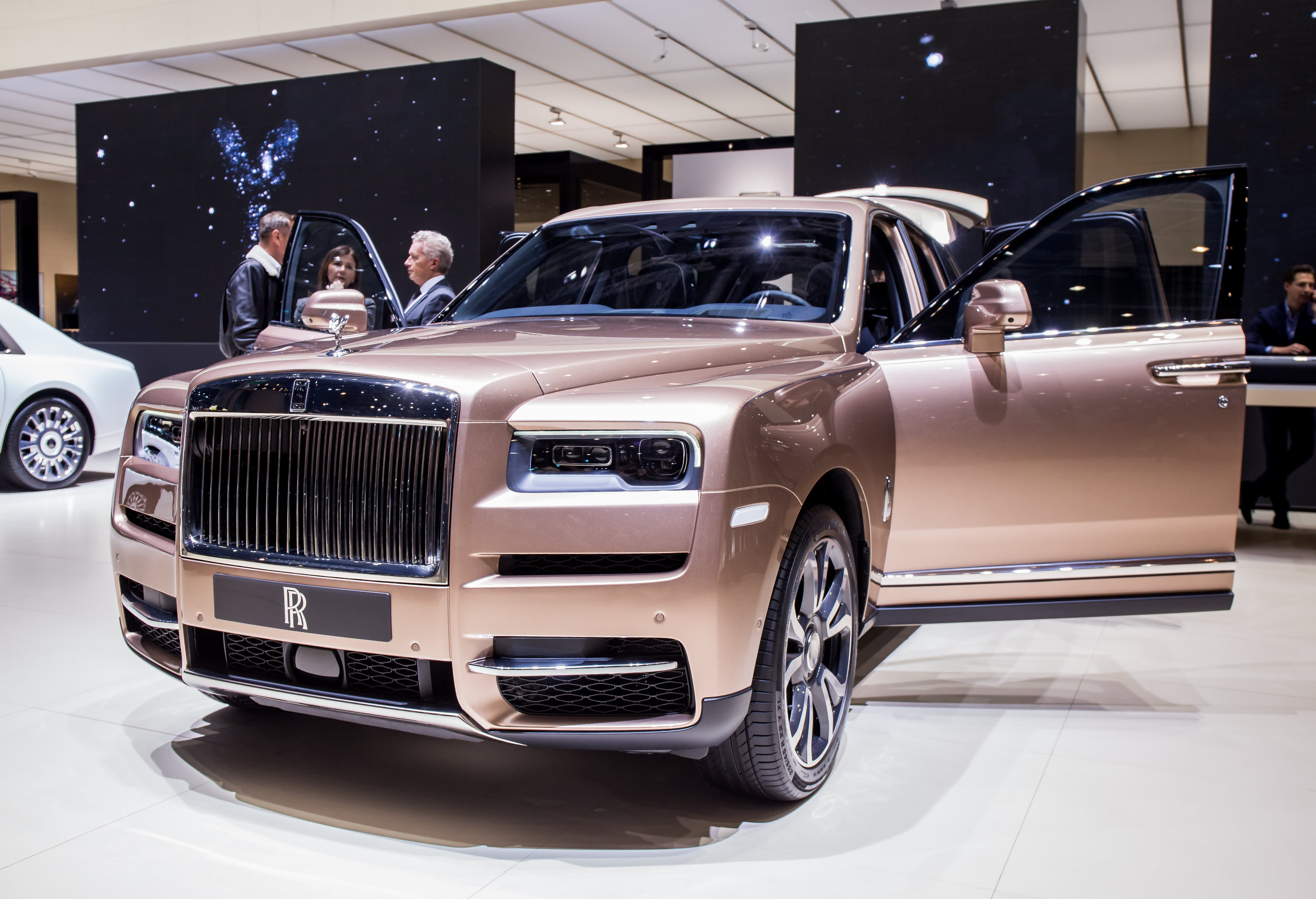
5. **The Automobile’s Dual Legacy: Unleashing Freedom While Enslaving the Masses**The early automobile was heralded as a harbinger of utopia, promising “labor-saving devices and laughter-filled adventures on roads yet to be built.” It truly unleashed previously unimagined individual freedom, liberating families from isolation and expanding markets for farmers. The societal impact was profound, transforming everything from family vacations and leisure time to the very American lexicon, giving us words like ‘motel.’
However, this liberation came with a significant and often overlooked cost, creating a profound “crack” in the automobile’s seemingly perfect pedestal: it simultaneously “enslaved the masses.” This duality reflects the unforeseen consequences of widespread adoption, transforming a wonder into a necessary, often burdensome, evil. The freedom of the open road became inextricably linked with the new obligations of car payments, the pervasive issue of pollution, and the eventual ubiquity of service stations and sprawling highway systems.
By 1925, the automobile had permeated American society to such an extent that “more families owned automobiles than had indoor plumbing.” This rapid integration, fueled by innovations like GM’s installment plan, launched an “unprecedented consumerism-based society and previously unknown levels of personal debt.” What began as a symbol of freedom swiftly became a financial tether, demonstrating how a revolutionary product could bind individuals to new economic realities.
Today, a century later, the perception of the automobile has shifted dramatically; it is now viewed as a “scapegoat, a necessary evil.” This evolution from a wonder to a burden, a tool of liberation to a symbol of environmental and economic constraint, represents a deep flaw in the utopian vision it once embodied. The automobile’s profound societal impact reveals that even the most celebrated technological advancements carry inherent contradictions and potential for negative consequences, showcasing a significant crack in the narrative of unadulterated progress. This transformation of perception highlights that the initial vision, while liberating, also led to unforeseen forms of societal entanglement and environmental responsibility.
The automotive industry, a century after its formative years, finds itself at another critical juncture, facing a new array of complex challenges that demand innovative solutions and resilient leadership. While the early 20th century contended with issues like basic safety features and market myopia, today’s landscape is shaped by rapid technological shifts, evolving global markets, and pressing regulatory demands. These contemporary pressures reveal a new set of “cracks” in the industry’s modern pedestal, demanding visionary leadership that can navigate not only innovation but also systemic flaws in market adaptation and product quality. As detailed in a recent white paper by the SAE Detroit Section’s Global Leadership Conference (GLC) and insights from J.D. Power, the industry is at a “breaking point,” confronting a perfect storm of converging factors.
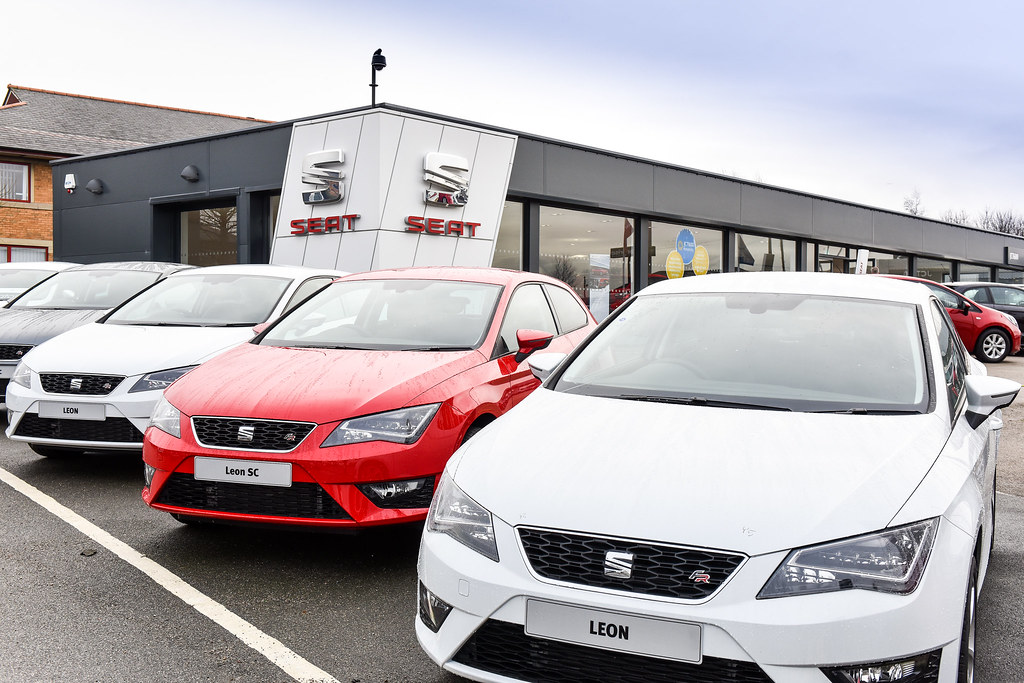
6. **The Challenge of Multiple Technological Waves and “Unlearning” Old Practices**The automotive industry is currently grappling with “multiple waves of technological changes,” fundamentally revamping how cars are engineered, manufactured, and sold. Electrification, for instance, has posed a significant challenge for legacy automakers, forcing them to rethink entire vehicle architectures and production processes. Beyond the powertrain shift, new manufacturing technologies like gigacasting are also “shaking up the status quo,” demanding massive investments and a steep learning curve for established players to remain competitive in a rapidly evolving market.
However, adapting to these new technologies isn’t just about adopting new tools; it also requires a profound shift in engineering philosophy. A key recommendation from the GLC white paper is for automakers to “unlearn” old practices that made sense for internal combustion vehicles but are entirely irrelevant for electric cars. This speaks to a deeply ingrained flaw: the difficulty of shedding established, often costly, engineering specifications when the underlying technology no longer necessitates them.
A vivid example of this “unlearning” challenge lies in the structural beams inside instrument panels of some legacy automaker EVs. These beams are still “built to specifications that were needed for cars with piston engines,” designed to eliminate vibrations that simply don’t exist in electric vehicles. Adhering to these outdated specs adds “unnecessary cost and weight” to EVs, making them less competitive.
Another striking illustration of this inertia is found in the sealant applied to trunk panels. Traditionally, this sealant was crucial “to prevent carbon monoxide from leaking into the passenger cabin” in gasoline-powered cars. Yet, even though “EVs do not emit carbon monoxide,” these trunk wells are “still built to the old specs with sealant.” Such examples underscore a systemic flaw where legacy thinking, rather than fresh design, continues to drive up costs and hinder innovation in the modern era, creating a clear crack in the industry’s ability to efficiently adapt.
The white paper critically advises automakers to “review their specifications and eliminate those which are unnecessarily driving up the cost of making electric vehicles.” This highlights a significant strategic misstep where the industry, despite investing “tens of billions of dollars in electric cars,” is failing to optimize fundamental design and manufacturing for the new paradigm, making the transition more expensive and less efficient than it needs to be.
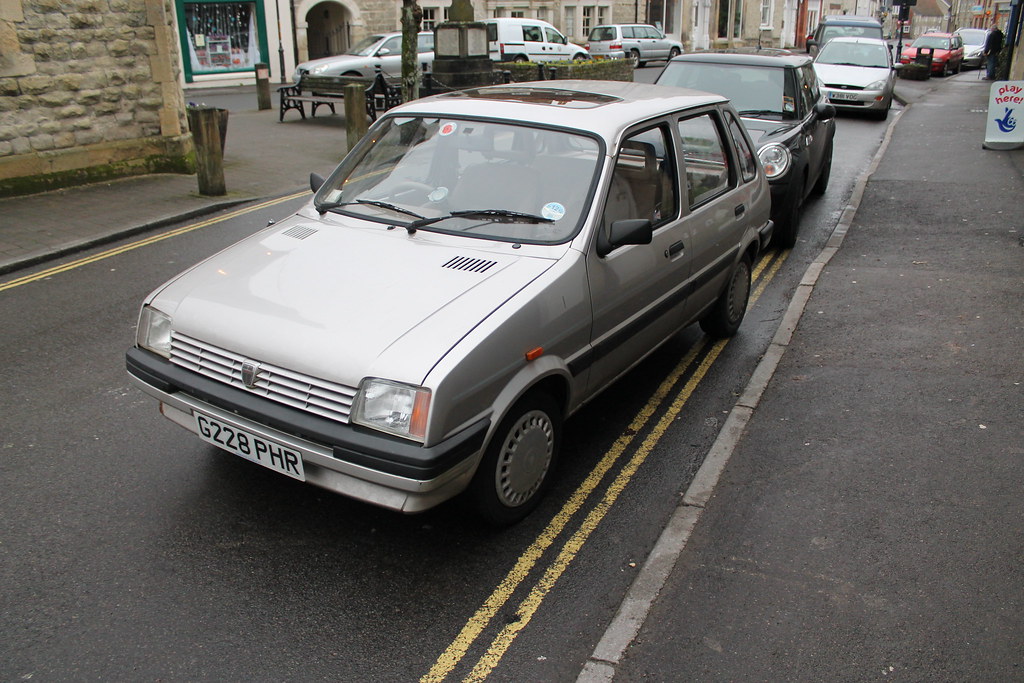
7. **The “Peak Auto” Phenomenon and Stagnating Demand**Compounding the technological challenges is the concerning arrival of what experts are calling “Peak Auto.” This concept signifies a fundamental shift in market dynamics, where it’s simply “not possible to keep selling more vehicles every year to the same old markets.” The white paper explicitly states that demand for cars has “stopped growing in the US, Europe, Japan, and South Korea,” traditional strongholds for automotive sales.
This stagnation represents a significant flaw in the industry’s long-term growth model, which has historically relied on ever-expanding sales volumes. The assumption of continuous growth, deeply embedded in strategic planning, is now being directly challenged. For an industry built on economies of scale, a plateauing or declining demand in mature markets presents a formidable obstacle to profitability and sustainability.
The “Peak Auto” phenomenon forces automakers to confront a stark reality: the pie isn’t getting any bigger. This requires a profound re-evaluation of market strategies, production capacities, and investment priorities. It highlights a systemic vulnerability where the industry’s reliance on established consumer habits and predictable market expansion is proving unsustainable, marking a critical point of market adaptation failure.
This challenge also brings into question the viability of current business models and the need for new revenue streams or radically different approaches to vehicle ownership and mobility. Without a growing customer base in their traditional markets, manufacturers must either innovate to stimulate demand, find new untapped markets, or fundamentally reconsider their operational scale, revealing a significant flaw in historical market assumptions. The era of consistent, easy growth is over, and the industry must now contend with a more constrained and competitive environment.

8. **Escalating Competition from Chinese Manufacturers and Market Share Erosion**Adding further pressure to the “breaking point” is the “threat of competition from new Chinese manufacturers, looming ever larger.” This is not merely about new players entering the field; it’s a strategic challenge rooted in significant cost advantages enjoyed by these new entrants. The white paper claims that “Chinese EV manufacturers have a cost advantage of up to 35%,” a staggering figure attributed to a “national strategy to lock up the supply chain for electric vehicles.”
This substantial cost differential creates a huge “boon for Chinese automakers to the detriment of all others,” directly impacting the global market share of established players. Over the last five years, the “Detroit Three automakers lost 6.6% points of global market share to Chinese automakers and EV startups.” This translates into a loss of “about 5.6 million units of capacity and tens of thousands of jobs,” underscoring the severe economic consequences.
The rapid ascent of Chinese manufacturers, projected to “export as many vehicles as the U.S. makes annually by the end of this decade,” reveals a deep systemic flaw in the global competitiveness of legacy automakers. This loss of market share is “reducing their economies of scale and economic output,” further exacerbating their difficulties in investing in new technologies and adapting to market changes. It’s a vicious cycle where decreased market presence leads to reduced resources for crucial innovation.
Japanese automakers have also “lost 3.4% points of share,” and the Germans “1% point,” highlighting that this challenge is not confined to the U.S. domestic market but is a global phenomenon affecting traditional automotive giants. The ability of Chinese competitors to leverage national strategy and supply chain control has exposed a vulnerability in the decentralized and market-driven approach of Western manufacturers, creating a significant crack in their global dominance. This competitive landscape demands a strategic response that goes beyond incremental improvements.
Read more about: Navigating the Depreciation Minefield: The Fastest Depreciating Cars of 2025 and What It Means for Your Wallet
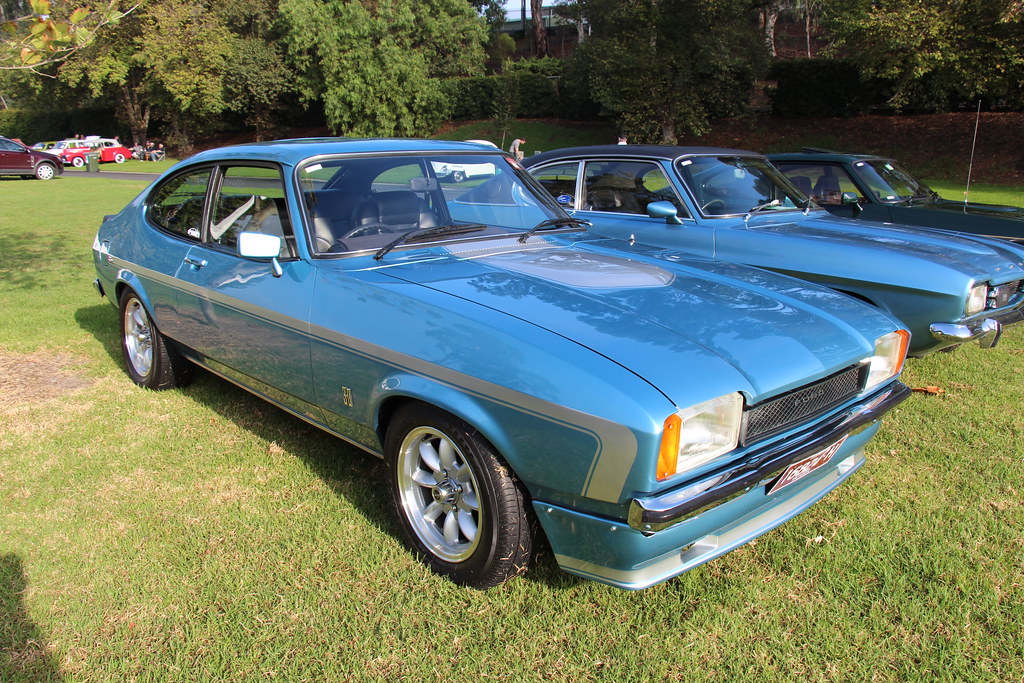
9. **Regulatory Pressures and Misaligned Consumer Demand for EVs**Another critical area of concern for the modern automotive industry revolves around “regulatory issues, particularly when it comes to pending environmental rules.” The U.S. automotive industry is compelled to invest “tens of billions of dollars in electric cars and plug-in hybrids to meet emission and fuel efficiency standards which become especially stringent in 2027 through 2032.” This significant financial outlay is, in effect, “coerced by government policy to move in this direction, at great cost.”
A deep flaw emerges from this regulatory mandate: a misalignment between policy objectives and actual consumer behavior. Despite the massive investments, “the public is not purchasing these vehicles in the numbers required to satisfy those requirements.” Furthermore, the white paper starkly notes that “a significant part of the public wants no part of them.” This creates an untenable situation where automakers are forced to produce vehicles that are not meeting market demand, leading to inventory build-ups and financial strain.
This gap between regulatory push and consumer pull highlights a strategic misstep where the industry is caught between compliance and commercial viability. The “resentment in the GLC regarding this fact” is palpable, indicating a frustration with policies that, while well-intentioned for environmental goals, are creating significant economic headwinds. The cost of manufacturing EVs, coupled with a reluctant consumer base, makes the transition exceedingly difficult for legacy automakers.
The situation underscores a systemic flaw in the overarching strategy for decarbonization within the automotive sector. Without addressing the underlying reasons for public reluctance—whether it’s cost, range anxiety, charging infrastructure, or practical utility—mandating production simply shifts the burden onto manufacturers without guaranteeing market success. This forced march toward electrification, without strong consumer buy-in, represents a substantial crack in the industry’s ability to smoothly adapt to future environmental demands.
Read more about: The Automotive Sector’s Reckoning: Unpacking the Forces Behind the Market’s 2025 Slide

10. **Declining Vehicle Quality and Pervasive Tech Problems in New Cars**Beyond the strategic and market-level challenges, a more granular, yet equally critical, flaw is emerging: a “wide range of quality problems” in new vehicles. J.D. Power’s 2023 U.S. Initial Quality Study (IQS) revealed that “quality declined in all other categories, primarily features, controls and displays, followed by infotainment.” Frank Hanley, senior director of auto benchmarking at J.D. Power, warned that “The automotive industry is facing a wide range of quality problems, a phenomenon not seen in the 37-year history of the IQS.”
This decline is particularly concerning because “the newer the vehicle, the more hassles and headaches reported by customers,” suggesting that increasing complexity is directly correlating with reduced reliability. While “new and exciting technology” is being offered, it’s “not always satisfying owners.” Common issues range from “audio system problems” and “horns with bad sound” to “faulty cupholders,” indicating fundamental design or manufacturing oversights.
A significant area of frustration stems from “high-tech approaches to this basic function” of door handles. Manufacturers, in pursuit of aerodynamics and appearance, are redesigning them, leading to owners experiencing “issues.” Alarmingly, “seven of the 10 most problematic models in this area are battery electric vehicles (BEVs),” suggesting that the rush to innovate in EVs is potentially sacrificing fundamental functionality.
Furthermore, driver assistance features, present in over 80% of new vehicles (forward collision warning; lane keeping assistance; lane departure warning; and blind spot warning), are also “report[ing] problems.” Even wireless charging pads, intended for convenience, are becoming a “percolating problem area,” with users finding locations “inconvenient, charging erratic and sometimes overheating cell phones.” Hanley notes that this is an area where manufacturers could “delight customers with this convenience, but instead are creating a problem for them.” These pervasive quality and design flaws represent a critical crack in the industry’s ability to deliver reliable, user-friendly products, eroding customer trust and threatening long-term brand loyalty.
Read more about: The 15 Cars Owners Regret Most: Why Their Value Dives Faster Than You Think
The journey through these contemporary challenges underscores a vital truth: the automotive industry, despite its phenomenal advancements, is perpetually in a state of evolution, revealing new “cracks” in its foundation even as it builds new pedestals. From navigating technological revolutions and global competitive shifts to addressing regulatory mandates and fundamental quality issues, the road ahead is anything but smooth. As the SAE Detroit Section’s white paper pragmatically states, “the industry will not be saved by government policies alone.” It calls for a renewed commitment to innovation, efficiency, and a deep understanding of evolving consumer needs. The lessons from both historical missteps and current struggles serve not as condemnations but as crucial guideposts. They illuminate the path for leaders who, with imagination, perspective, and unwavering resilience, can transform these formidable challenges into opportunities for a truly sustainable and consumer-centric future, ensuring the industry’s enduring relevance in a world that continues to change at breathtaking speed.



